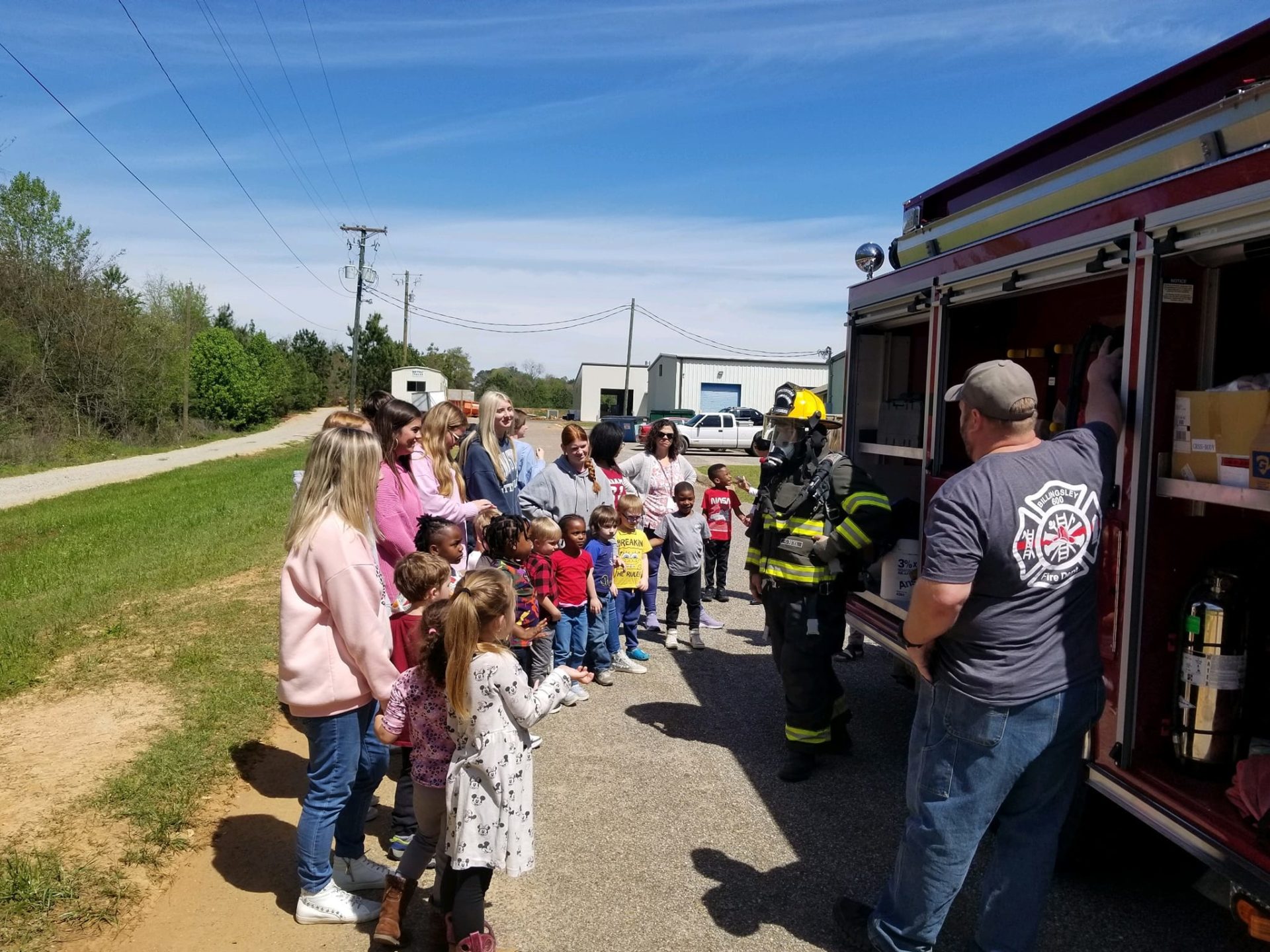Many individuals may not realize the significant role that volunteer fire departments play in reducing the environmental impacts of firefighting. As you explore the practices and strategies these dedicated teams implement, you will gain insight into how they balance effective fire response with environmental stewardship. From utilizing eco-friendly firefighting agents to employing sustainable training methods, volunteer fire departments are actively working to minimize their ecological footprint while protecting communities. Understanding these measures will deepen your appreciation for the commitment and resourcefulness of these volunteers in safeguarding both lives and the environment.
Understanding the Environmental Impacts of Firefighting
Your understanding of how firefighting affects the environment is vital, especially when it comes to volunteer fire departments. These organizations play a significant role in community safety, but their methods can inadvertently contribute to environmental issues. From air quality concerns to water contamination, it’s vital to recognize these impacts and explore strategies for mitigation. This chapter will help you grasp the complexities of firefighting’s environmental footprint and the necessity for responsible practices in fire management.
Air Quality Concerns
One of the most immediate environmental consequences of firefighting is its impact on air quality. Volunteer fire departments often use various chemicals and fuels in their operations, which can release harmful pollutants into the atmosphere. These emissions can degrade air quality and pose health risks to both firefighters and nearby residents, making it vital to address and minimize these concerns.
Water Contamination Issues
Against the backdrop of firefighting, water contamination is another significant environmental concern. Firefighting efforts typically involve large volumes of water, often mixed with chemical retardants, foam, or other agents. When these substances enter local water sources, they can harm aquatic ecosystems and potentially disrupt drinking water supplies.
Also, the runoff from firefighting activities can introduce hazardous substances into rivers and lakes. This not only affects local wildlife but can also compromise the safety of water for human consumption. Therefore, it is vital for volunteer fire departments to develop and implement best practices for water management, such as strategically positioning containment systems and using environmentally friendly extinguishing agents to reduce the risk of contamination.
Sustainable Practices in Volunteer Fire Departments
The commitment of volunteer fire departments to sustainable practices plays a significant role in reducing the environmental impact of firefighting. By integrating eco-friendly methods and tools, these organizations make strides toward protecting both human life and the natural surroundings. From innovative techniques to the promotion of environmental stewardship, you can see how volunteer firefighters adapt to support sustainability in their communities.
Use of Eco-Friendly Fire Suppressants
Fire departments are increasingly adopting eco-friendly fire suppressants, focusing on products that minimize harm to the environment. You’ll find that these alternatives often replace traditional foam agents, reducing toxicity in water runoff and promoting healthier ecosystems. By choosing biodegradable and less harmful solutions, your local volunteer fire department contributes to the preservation of natural resources.
Training for Environmental Awareness
Beside enhancing firefighting skills, volunteer departments prioritize training for environmental awareness. This education ensures that you, as a volunteer firefighter, understand the ecological impacts of your actions during operations. Workshops and courses foster a culture of responsibility, encouraging you to recognize the intersection of firefighting and ecological stewardship.
Volunteer fire departments recognize that effective training goes beyond firefighting techniques; it incorporates environmental education as well. This training equips you with knowledge about local ecosystems, wildlife protection, and the significance of sustainable practices. As a community member, you learn to assess environmental risks and make informed decisions during emergencies, balancing effective firefighting with ecological protection. Such a holistic approach empowers you to be both a skilled firefighter and a conscientious steward of your environment.
Community Engagement and Education
One way volunteer fire departments mitigate the environmental impacts of firefighting is through community engagement and education initiatives. By involving local residents in discussions about fire management practices, departments foster awareness about the importance of protecting natural resources. Engaging your community helps instill a sense of responsibility for the environment, encouraging proactive measures in fire prevention and resource conservation.
Public Awareness Campaigns
After identifying common practices that contribute to environmental harm, many volunteer fire departments launch public awareness campaigns. These initiatives educate the public on responsible fire practices and the ecological consequences of uncontrolled fires. By providing information through workshops, social media, and local events, you can promote safer behaviors and a deeper respect for your surroundings.
Collaborations with Environmental Organizations
Any effort to reduce the environmental impacts of firefighting is amplified through collaborations with environmental organizations. By partnering with these groups, volunteer fire departments can gain access to additional resources, expertise, and support in implementing sustainable practices.
But the benefits of collaborating with environmental organizations extend beyond resource sharing. These partnerships often lead to the development of joint programs that address both firefighting and broader environmental concerns. You could participate in localized projects such as tree planting, habitat restoration, and wildfire prevention workshops. This not only enhances the ecological landscape but also fosters a stronger community bond centered around environmental stewardship.
Technological Innovations
Once again, technological innovations are pivotal for volunteer fire departments aiming to reduce the environmental impact of firefighting. By leveraging advanced techniques and tools, these departments enhance their operational efficiency and minimize the ecological footprints of their activities. Innovations not only streamline response times but also improve water usage, ultimately leading to more sustainable firefighting practices.
Advancements in Firefighting Equipment
After exploring new gear and systems, you’ll find that advancements in firefighting equipment play a significant role in making your firefighting efforts more environmentally friendly. Modern tools are designed with efficiency in mind, using less water while delivering powerful results. This helps in mitigating the potential damage caused by excessive water runoff and reduces the strain on local water resources.
Implementation of GIS Mapping for Risk Assessment
Any effective strategy for reducing environmental impacts involves thorough assessment, and the implementation of GIS mapping greatly aids in this area. You can determine high-risk zones and make informed decisions on resource allocation, ultimately contributing to more effective fire prevention measures. This mapping technology provides real-time data that helps you pinpoint areas that may require additional attention or preparation.
Equipment equipped with Geographic Information System (GIS) mapping can identify vulnerable regions prone to fire hazards. By analyzing data related to vegetation types, topography, and weather patterns, you can proactively plan fire suppression tactics. This emphasis on precision not only enhances your department’s readiness but also minimizes unnecessary resource deployment, lowering your overall environmental impact while keeping communities safe.
Case Studies of Successful Mitigation Efforts
Unlike standard firefighting practices, many volunteer fire departments have implemented innovative strategies to reduce environmental impacts. Here are some successful case studies:
- California’s Rural Fire Prevention Program reduced wildfires by 30% through controlled burns and vegetation management.
- In Colorado, the Estes Park Fire Department used biodegradable fire retardants, resulting in a 40% decrease in chemical runoff.
- Oregon’s Volunteer Firefighters Initiative trained over 200 volunteers in eco-friendly firefighting techniques, minimizing water usage by 25%.
- Florida’s Coastal Fire Department adopted rainwater collection systems, increasing water conservation rates by 50% during firefighting efforts.
Examples from Various Regions
Various volunteer fire departments across different regions have adopted unique measures to lessen environmental impacts. In the Midwest, for instance, fire departments have focused on wildland-urban interface (WUI) projects that protect both property and ecosystems. Meanwhile, Southeast volunteer units have collaborated with local agencies to enhance native vegetation while suppressing invasive species, maintaining biodiversity.
Lessons Learned from Volunteer Fire Departments
Against conventional firefighting wisdom, volunteer fire departments have discovered strategic ways to balance firefighting and environmental sustainability. Their experiences provide valuable insights into best practices.
And through these lessons learned, your local volunteer fire department can embrace eco-friendlier practices. Utilizing a mix of community education, resource conservation, and collaboration with environmental agencies enhances your firefighting strategies. By incorporating sustainable practices, such as using less toxic materials and emphasizing fire prevention, you can mitigate the harmful effects firefighting may have on your environment. This approach not only protects your community but also ensures that local ecosystems thrive despite the challenges posed by wildfires.
Future Directions for Volunteer Fire Departments
Keep your focus on innovation and collaboration as volunteer fire departments look to the future. By embracing new technologies and practices, you can enhance your firefighting capabilities while minimizing environmental repercussions. Strengthening partnerships with local agencies and communities will also be key to fostering resilience in the face of evolving challenges.
Policy Recommendations
Beside exploring funding opportunities for greener firefighting equipment, your department can advocate for policies that promote sustainable practices. Engage with local governments to support initiatives that reduce harmful emissions and encourage the use of eco-friendly materials in firefighting operations. This proactive stance can set a benchmark for other departments to follow.
Integrating Climate Change Considerations
Recommendations for integrating climate change considerations into volunteer fire departments should include assessing risks specific to your region. By identifying potential environmental threats, you can develop effective strategies for preparedness and response. Training your personnel to understand climate impacts will empower them to act decisively in emergencies.
Hence, addressing climate change involves evaluating historical data and predicting future scenarios based on current trends. You should focus on training for your team that emphasizes adaptability and resilience in a changing climate. Implementing community engagement programs will raise awareness about fire risks, driving home the importance of collective action. Moreover, investing in research will enable you to stay informed about the latest best practices for sustainable firefighting, ultimately leading to safer and more environmentally responsible operations.
Conclusion
Drawing together the strategies employed by volunteer fire departments, you can see how they actively work to mitigate the environmental impacts of firefighting. By utilizing eco-friendly equipment, adopting preventive measures such as controlled burns, and educating the community on fire safety, you contribute to both effective fire management and environmental preservation. Your involvement and awareness can enhance these efforts, ensuring that the natural surroundings remain protected while addressing the challenges of firefighting.


